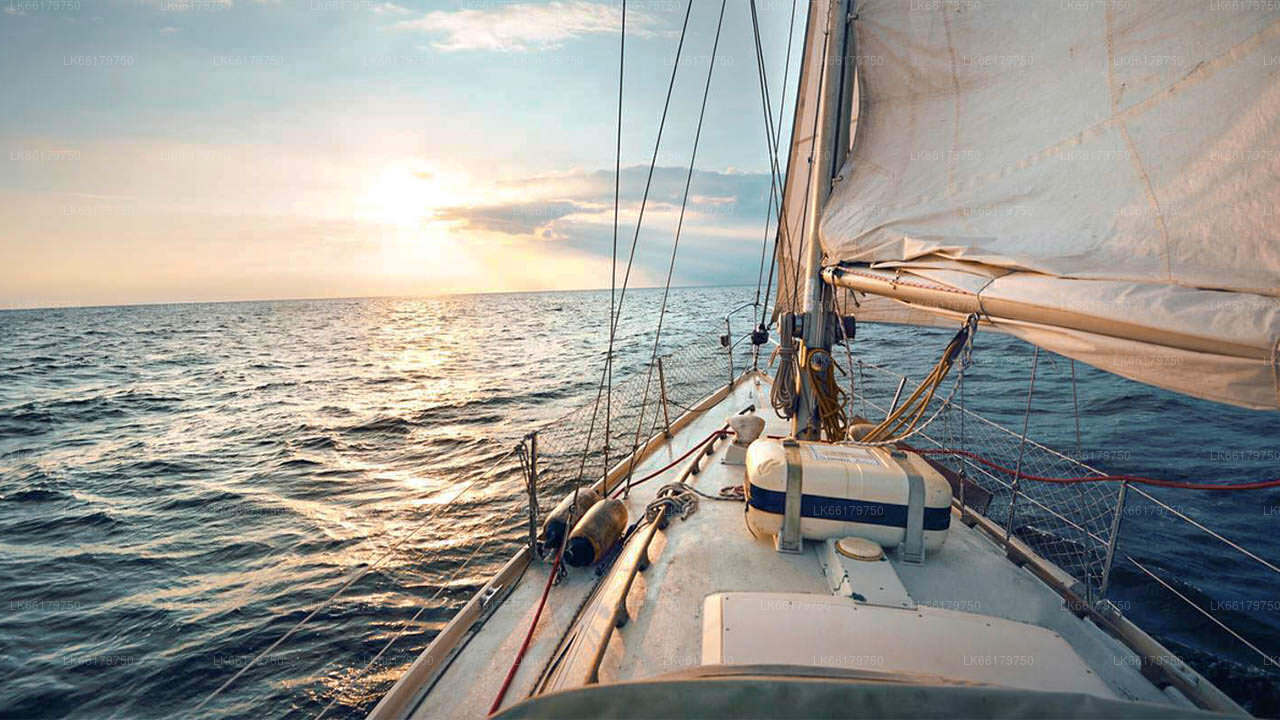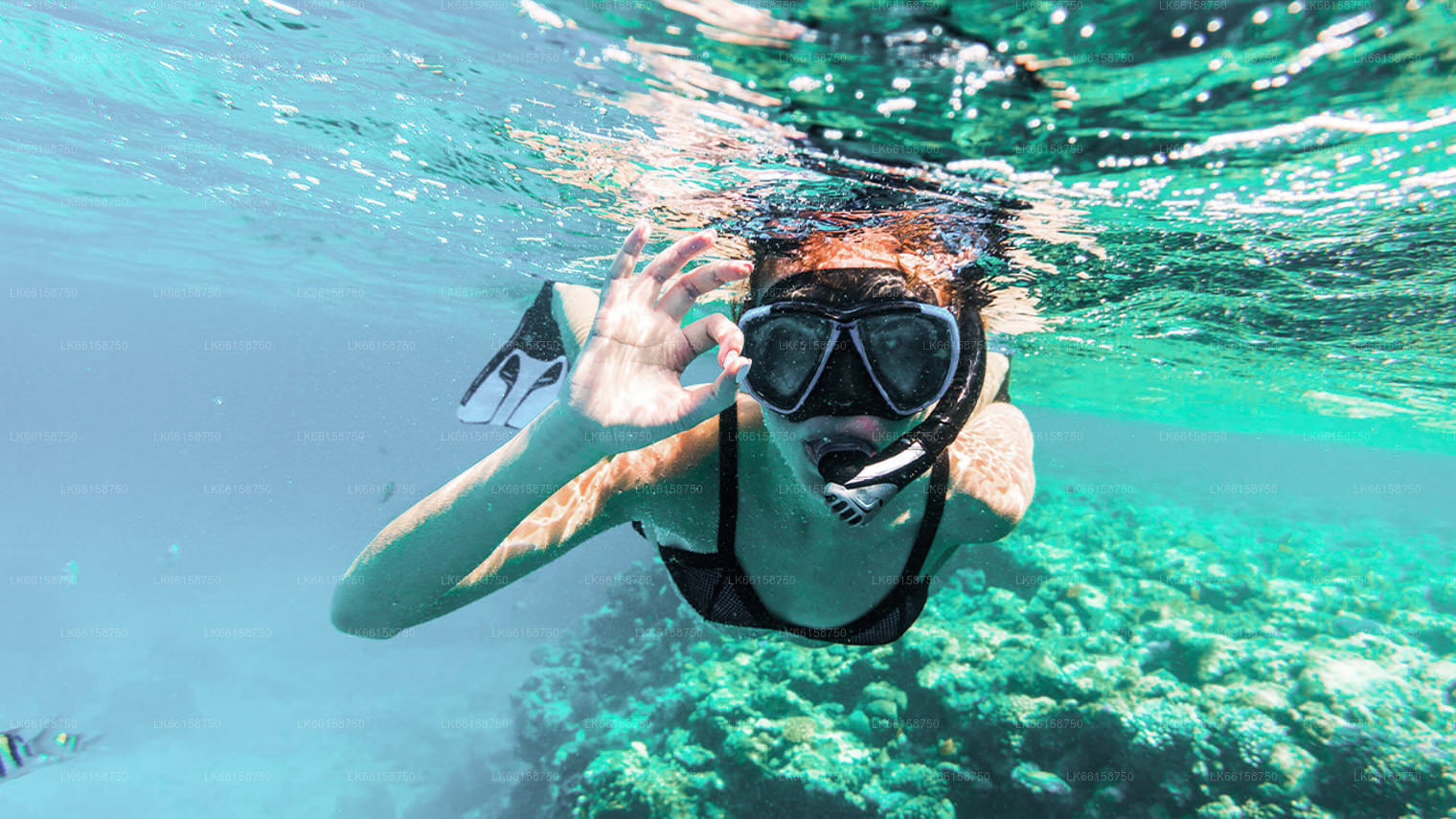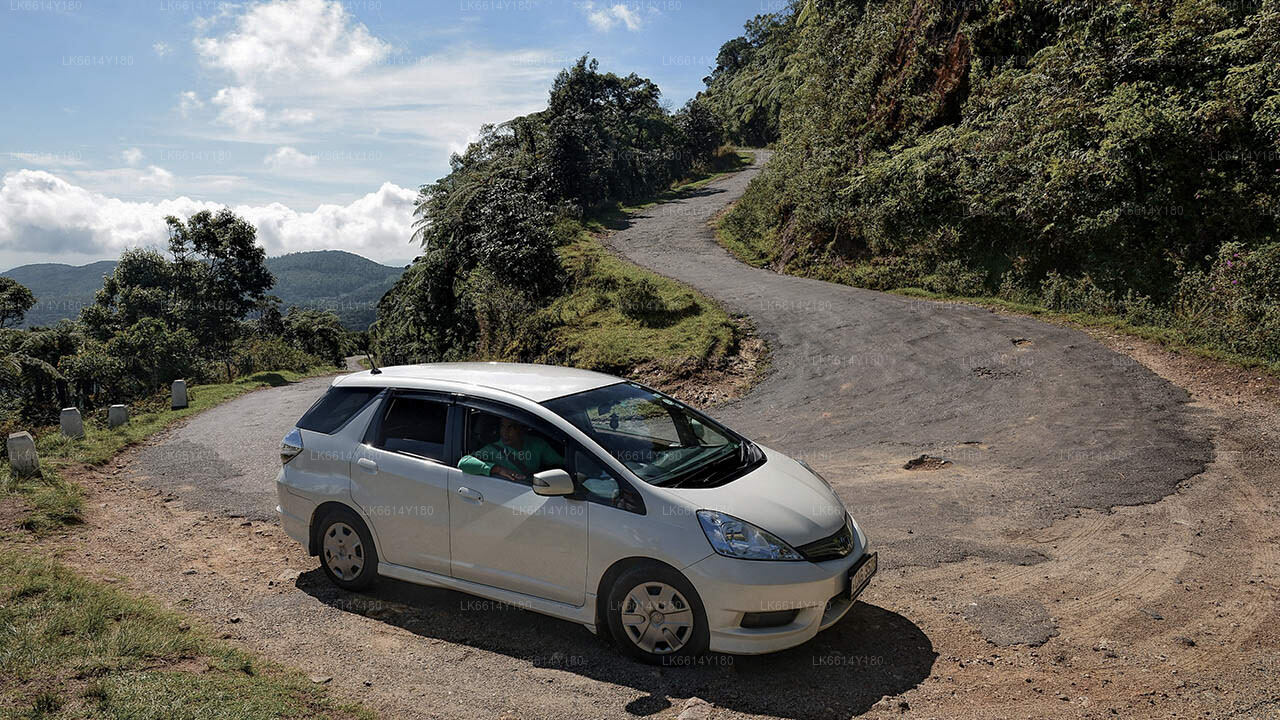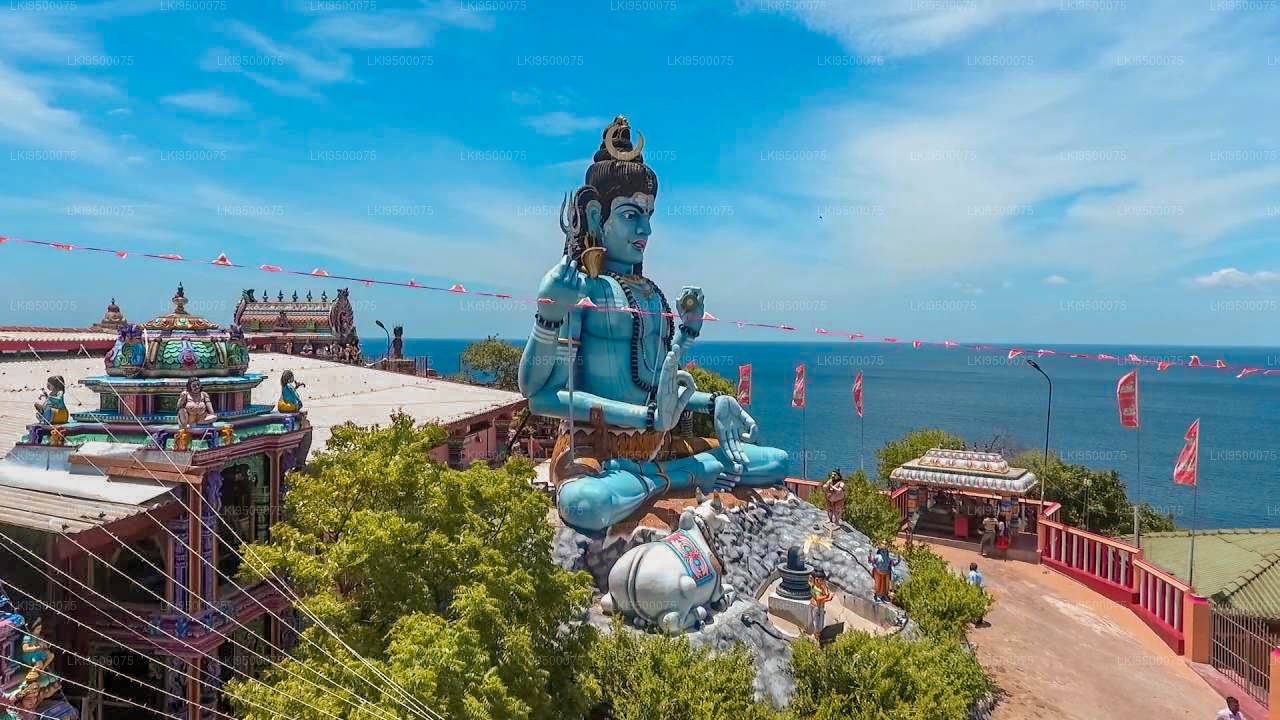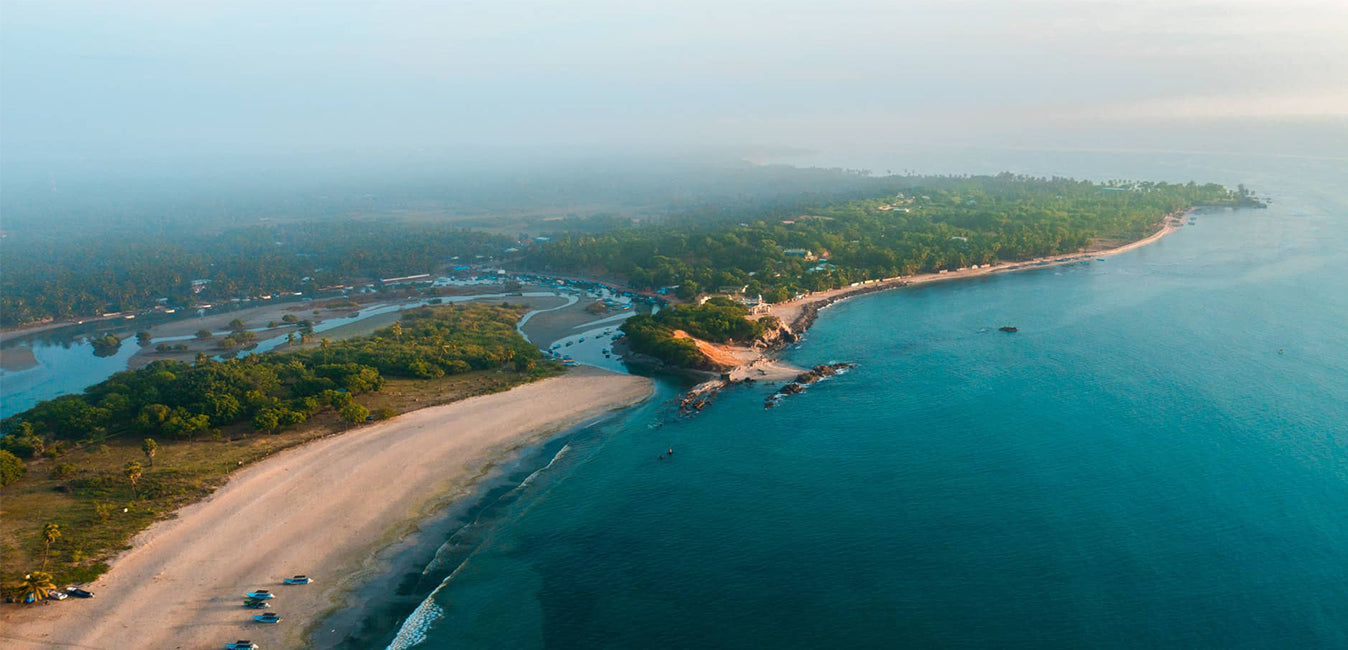
Ville de Trincomalee
Trincomalee, située sur la côte nord-est du Sri Lanka, possède un port naturel en eau profonde et des plages immaculées. Riche en histoire, elle abrite des sites emblématiques comme l'ancien temple de Koneswaram. La diversité de sa faune et de sa flore marines ainsi que le dynamisme de sa culture en font une destination captivante pour les touristes comme pour les passionnés d'histoire.
Koneswaram Temple
Koneswaram temple of Trincomalee (Tamil: ?????? ?????????? ??????) or Thirukonamalai Konesar Temple – The Temple of the Thousand Pillars and Dakshina-Then Kailasam is a classical-medieval Hindu temple complex in Trincomalee, a Hindu religious pilgrimage centre in Eastern Province, Sri Lanka. The most sacred of the Pancha Ishwarams of Sri Lanka, it was built significantly during the reign of the early Cholas and the Five Dravidians of the Early Pandyan Kingdom on top of Konesar Malai, a promontory overlooking Trincomalee District, Gokarna bay and the Indian Ocean. Its Pallava, Chola, Pandyan and Jaffna design reflect a continual Tamil Saivite influence in the Vannimai region from the classical period. The monument contains its main shrine to Shiva in the form Kona-Eiswara, shortened to Konesar. Connected at the mouth of the Mahavilli Ganga River to the footprint of Shiva at Sivan Oli Padam Malai at the river's source, the temple symbolically crowns the flow of the Ganges River from Shiva's head of Mount Kailash to his feet.
Developed from 205 BC, the original kovil combined key features to form its basic Dravidian temple plan, such as its thousand pillared hall – "Aayiram Kaal Mandapam" – and the Jagati expanded by King Elara Manu Needhi Cholan. Regarded as the greatest building of its age for its architecture, elaborate sculptural bas-relief ornamentation adorned a black granite megalith while its multiple gold plated gopuram towers were expanded in the medieval period. One of three major Hindu shrines on the promontory with a colossal gopuram tower, it stood distinctly on the cape's highest eminence.
The journey for pilgrims in the town begins at the opening of Konesar Road and follows a path through courtyard shrines of the compound to the deities Bhadrakali, Ganesh, Vishnu Thirumal, Surya, Raavana, Ambal-Shakti, Murukan and Shiva who presides at the promontory's height. The annual Koneswaram Temple Ther Thiruvilah festival involves the Bhadrakali temple of Trincomalee, the Pavanasam Theertham at the preserved Papanasuchunai holy well and the proximal Back Bay Sea (Theertham Karatkarai) surrounding Konesar Malai.
The Sinhalese king Gajabahu II who ruled Polonnaruwa from 1131 to 1153 AD is described in the Konesar Kalvettu as a devout worshipper of Lord Shiva and a benefactor of the temple of Konamalai. He spent his last days in the associated Brahmin settlement of Kantalai.
The complex was destroyed in colonial religious attacks between 1622 and 1624 and a fort was built at the site from its debris. A 1632 built temple located away from the city houses some of its original idols. Worldwide interest was renewed following the discovery of its underwater and land ruins, sculptures and Chola bronzes by archaeologists and Arthur C. Clarke. It has been preserved through restorations, most recently in the 1950s. Granted ownership of villages in its floruit to form the Trincomalee District, Trincomalee village is located on the cape isthmus within the compounds. Revenue from the temple provides services and food to local residents.
Koneswaram has
À propos du district de Trincomalee
Trincomalee est une ville portuaire située sur la côte est du Sri Lanka. La baie de Trincomalee, avec son port, est réputée pour sa taille et sa sécurité ; contrairement à tous les autres ports de la mer Indien, elle est accessible à tous types d'embarcations par tous les temps. Ses plages sont prisées pour le surf, la plongée sous-marine, la pêche et l'observation des baleines. La ville abrite également le plus grand fort hollandais du Sri Lanka. Elle accueille d'importantes bases navales et aériennes sri-lankaises.
La plupart des Tamouls et des Cinghalais considèrent ce lieu comme sacré et se reconnaissent comme les peuples autochtones de la région. Trincomalee et ses environs abritent des sites hindous et bouddhistes d'importance historique. Ces sites sont sacrés pour les hindous et les bouddhistes.
À propos de la province orientale
La Province de l'Est est l'une des neuf provinces du Sri Lanka. Bien que les provinces existent depuis le XIXe siècle, elles n'ont acquis de statut légal qu'en 1987, lorsque le 13e amendement à la Constitution de 1978 a institué les conseils provinciaux. Entre 1988 et 2006, la Province de l'Est a été temporairement fusionnée avec la Province du Nord pour former la Province du Nord-Est. Sa capitale est Trincomalee. En 2007, la Province de l'Est comptait 1 460 939 habitants. Elle est la plus diversifiée du Sri Lanka, tant sur le plan ethnique que religieux.
La province orientale couvre une superficie de 9 996 kilomètres carrés (3 859,5 miles carrés). Elle est bordée par la province du Nord au nord, le golfe du Bengale à l'est, la province du Sud au sud et les provinces d'Uva, du Centre et du Centre-Nord à l'ouest. Son littoral est principalement composé de lagunes, dont les plus importantes sont les lagunes de Batticaloa, de Kokkilai, d'Upaar et d'Ullackalie.





